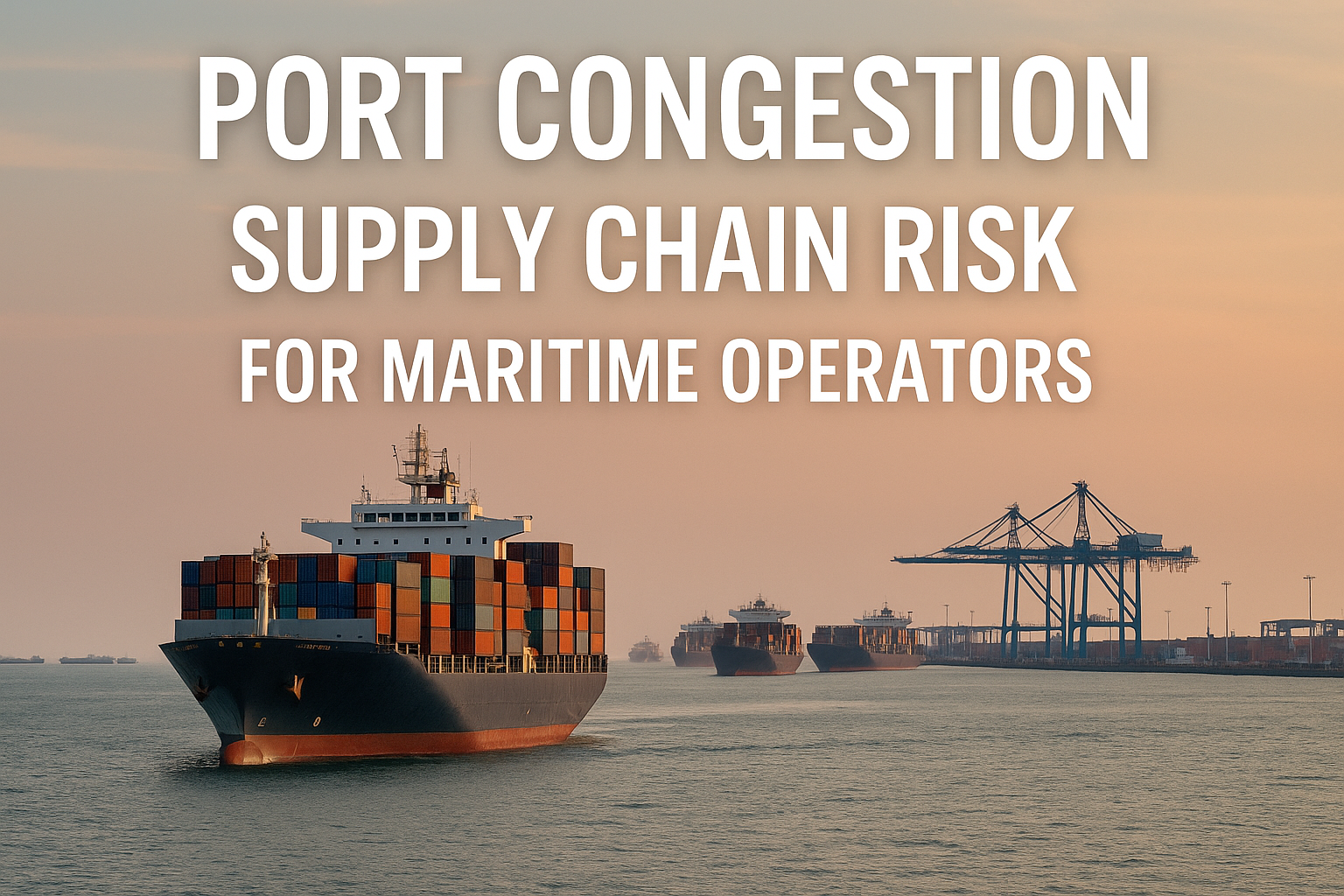In October 2025, operators worldwide are facing mounting port congestion supply chain risk as unexpected disruptions at key hubs ripple through the global maritime network. For example, the Port of Antwerp-Bruges—a critical node in Europe’s fuel and container flows—has seen capacity drop significantly because of industrial action by harbour pilots, with only 31 vessels processed in a day compared to its usual 60–80. Reuters
This kind of bottleneck doesn’t just delay one ship—it reverberates through cargo scheduling, vessel rotation, inventory planning and cost control. In this article, we’ll explore the risks stemming from port congestion, and outline actionable strategies for maritime operators to adapt and build resilience.
The Problem: How Port Congestion Becomes Supply Chain Risk
1. Reduced throughput and capacity loss
When the Port of Antwerp-Bruges’ pilot workforce moved into “work-to-rule” mode, throughput plunged. Ships were delayed or diverted, affecting schedule integrity.
For carriers and shippers, this means longer port stays, increased waiting costs, and potential missed trans-shipment windows.
2. Cascading schedule disruption
Delays in major hubs force carriers to adjust rotations, skip ports, or incur ballast/re-positioning costs. Ships scheduled for Antwerp often link to feeder services or inland distribution networks—when one node jams, the effect cascades.
3. Rising costs and margin squeeze
Longer port stays, demurrage, vessel idling, alternative routing—all raise OPEX. Cargo owners may face delays in deliveries, inventory stockouts or higher freight. The erosion of schedule reliability also undermines service commitments and can damage reputation.
4. Risk of cargo re-routing and supply-chain fragility
With major hubs clogged, logistics planners may reroute through secondary ports—but that can mean longer transit times, added inland distribution cost, and uncertain infrastructure readiness. Unexpected picks increase complexity and risk.
5. Strategic and regulatory exposure
In high-stakes scenarios (fuel deliveries, time-sensitive cargo, critical industrial supply), a port bottleneck can affect national energy security or manufacturing flows. For instance, Antwerp handles a large share of jet fuel and diesel for Europe; delays here can ripple into other industries. Reuters
Regulators and authorities increasingly expect supply-chain resilience, making operators vulnerable if disruptions escalate.
The Solution: Strategic Actions to Manage Port Congestion Supply Chain Risk
1. Build dynamic gateway alternatives
- Map your busiest port gateways and identify primary + secondary options.
- Pre-qualify alternative ports with capacity, infrastructure, and hinterland links.
- Evaluate cost/time trade-offs of using alternate ports ahead of crises.
2. Diversify routing and feeder network strategies
- Avoid putting all volume through one hub. Use different regional gateways when beneficial.
- Work with carriers and logistics partners to ensure contingency port calls.
- Adjust your vessel rotation planning: include buffer ports, plan for overflow.
3. Monitor port-performance KPIs in real time
- Track vessel yard queues, berth occupancy, pilot availability, waiting-time metrics.
- Use digital dashboards or third-party data feeds (e.g., port-congestion alerts) to monitor developments.
- Trigger contingency plans if congestion crosses your internal thresholds.
4. Contract flexibility and service-level management
- Build clauses into charters or shipping contracts allowing alternate port call or re-routing scenarios.
- Set service-level agreements (SLAs) with logistics partners that include congestion-risk contingencies.
- Communicate transparently with clients about potential delays and the mitigation plan.
5. Leverage operational and supply-chain agility
- Maintain some buffer capacity in your scheduling (e.g., available slot, extra vessel leg) to absorb disruptions.
- Coordinate with inland logistics and warehousing to flex handling when upstream delays occur.
- Cross-train teams (operations, procurement, logistics) to respond quickly to port disruption scenarios.
6. Strategic scenario planning and resilience investment
- Run “what-if” simulations: What happens if major feeder port slows by 50%? What cost and delay impact?
- Invest in digital twin modelling of port-hub performance and supply-chain flows.
- Consider resilience investments: terminal leases at secondary ports, logistics hubs closer to alternate gateways.
Why Acting Now Matters
Port congestion is not a “once-in-a-while” anomaly—it’s increasingly frequent owing to labour disputes, infrastructure constraints, regulatory changes and trade-flow shifts. The example of Antwerp-Bruges shows how quickly disruption can escalate from local issue to global ripple.
By acting early, operators can:
- Lock in alternate port frameworks before alternatives become congested
- Strengthen customer confidence through proactive resilience rather than reactive apology
- Contain costs by preventing severe delays rather than paying for major disruption
- Integrate port-risk mitigation into their broader digital/resilience strategy rather than treating it as after-the-fact
Conclusion
The recent backlog at major port gateways like Antwerp-Bruges spotlights the very real threat of port congestion supply chain risk in today’s maritime network. Rather than waiting for disruption to hit, successful operators will build flexibility, monitor key indicators, and lay the groundwork for alternate routing now.
At The Saturn Partners, we help maritime organizations embed resilience into their operations from digital twin modeling and logistics-risk frameworks to port-gateway strategy and contract-design support.
Contact us today to discuss how you can fortify your supply-chain, de-risk vessel routing, and enhance your operational agility in the face of hub-level disruption.

